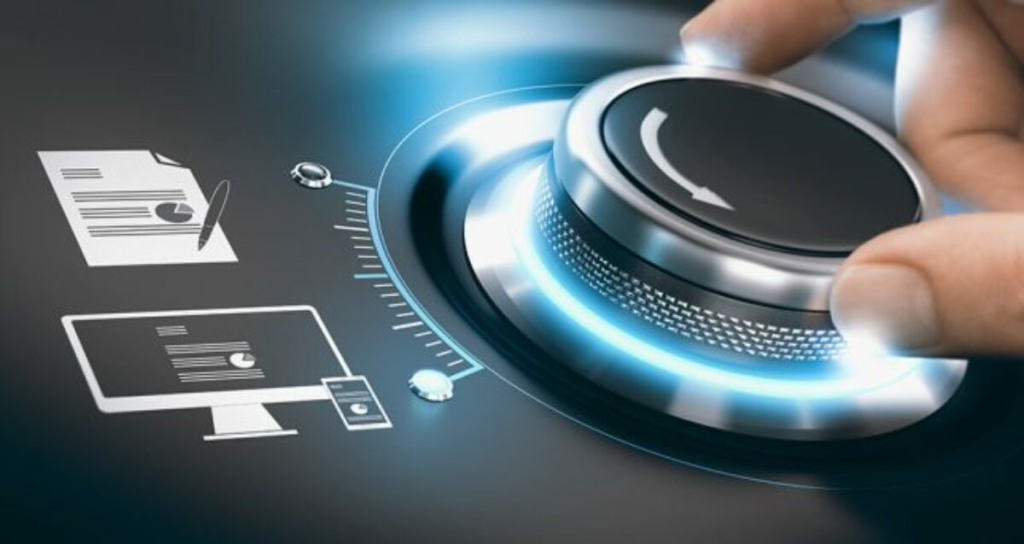:quality(80)/business-review.eu/wp-content/uploads/2022/01/digital3.png)
Do digital technologies lead to operational improvements in business or change it fundamentally? Discussing this issue with the help of experts from Boosty Labs – a software outsourcing company in Ukraine – is a good opportunity to talk about business technologies.
Modern business technologies are built on the relationship between the market, the needs and behavior of buyers (customers), reduce and simplify the value chain and form new business models. Understanding these relationships helps organizations adapt and make real changes when needed.
The financial director uses the possibilities of integration processes not only within the company, but also with external counterparties – he organizes the solution of certain issues in the form of projects for all functions in the company, not only for his own – financial. This allows you to concentrate on internal resources and use the potential of specialists. And here he is helped by the active participation of the HR director.
Technology opens up new opportunities and at the same time requires a lot of effort from the FD to perform its main functions – providing funding for current activities and investing in development.
At the same time, it is important not to miss global trends in order to maintain competitiveness. To make this possible, it is necessary to know and understand the real or at least close to it state of affairs with individual products/services and in the company as a whole.The constructed economic model of the assortment/company (revenues and costs) with specific parameters (prices, volumes, necessary resources, terms, quality), as it is now, and the desired (ideal) state that needs to be reached and which is achieved in the case of faultless control. Since the situation is constantly changing, the values of the model parameters can fluctuate within the acceptable range, so you need to build a vector of goals ordered by priority, and a state vector, or state matrices.
To build dynamic models, determine the parameters of a portfolio of products / services and simulate various scenarios of the company’s behavior, operational information is needed, integrated in a single information base in the form of information modules. They allow you to receive management information and make decisions quickly.
But this is only one side of the issue. The other is that the decisions made need to be quickly implemented in practice, which is possible if the enterprise is capable, mobile and can flexibly approach the solution of tasks. Separate subdivisions/services must work in concert, interact with each other like gears, become the driving force of movement, like a transmission in a car, work as one team, as one whole. Then there are new opportunities to identify problems, solve them and adapt to changes.
However, in the practice of many companies, the above two tasks have not yet been solved – divisions/services perform only their functions, information is collected and accumulated in separate databases, as a result, it is not possible to quickly make a decision, put it into practice and achieve the desired parameters. In order not to lose control, which can be caused by the loss of some objectively necessary goals for management, companies use modern information and communication technologies, trying to bridge the gap between the existing state and the desired one.

It is important to prioritize correctly
In connection with globalization, there is an increasing interest in transport logistics, which leads to increased competition in this area. Given the challenges, it is important to correctly prioritize what to invest in first, since funding is limited. It is equally important to balance the portfolio of assets: on the one hand, we invest in hardware, on the other, in technologies, including digital ones.
Business technologies are constantly developing in transport logistics and they are aimed at solving problems that arise in this area. For example, under the influence and as a result of the use of digital technologies, the growing demand for speed of delivery, new capacities, as well as fierce competition in supply chains, there are certain tensions. Logisticians can relieve this stress by slowing down deliveries.
We are talking about a differentiated approach to transportation to meet specific needs, taking into account:
- customer delivery priorities;
- adjusting services in the supply chain;
- achieving higher quality and lower cost.
With this approach, you also need to choose priorities. Tactical logistics slowdown is suitable in cases where customers can accept longer delivery times, which in some cases positively affects the bottom line. For example, in maritime transport, a small reduction in speed already significantly reduces fuel costs and carbon footprint, according to experts.
The complexity of the supply chain and the varying needs of customers require the right mix of modes of transport and services.By adjusting logistics, the right combination of modes of transport and transportation models, simpler supply chains can be formed to relieve tension. Such business technologies can balance the supply chain, reduce storage costs, and operate sustainably at lower cost with higher quality.
Synchronicity is considered more efficient and environmentally friendly than using fixed modes of transportation with predetermined routes and schedules, logistics experts say.
However, individual solutions are needed to serve the different priorities and wishes of customers. Their advantages are in reducing costs and optimizing the quality of work by organizing transport and warehouse schedules. But this direction is only developing and is not yet mature enough, there are also technical difficulties associated with IT.

In the competition for the client, the price comes first
Significant changes are expected in the car sales business.This sector, like the banking sector, will become different in the next three to four years. There will be a complete restructuring of the sales chain in connection with digitalization, the emergence of new projects. Car manufacturers are already starting to engage in direct sales, which means that dealer networks will gradually leave the market.
The dealer business will remain, at best, like dealer stations. You need to understand this and be ready for it. The postulates and principles of doing business will change compared to what it was 20 years ago, and this is the first challenge, the second is related to the emergence of new players in the automotive retail industry. Amazon has started selling cars in Europe, Germany through its network, which will also lead to a significant decrease in the value of dealer networks.
For car sellers, cost and positioning is becoming a more important topic, as even with good consumer activity, buyers are increasingly concerned about price, which comes out on top compared to other car features. The third challenge is in the development of the production of electric cars.
Online car sales are nothing new. Dealership costs, overheads and personnel costs are, from the point of view of car manufacturers, a cash freeze, and they are needed for investments in the development of car companies.
This suggests that tech companies are increasingly posing major threats to auto dealers. Increasing competition from digital companies is driven by four interconnected megatrends in the automotive industry:
- mobility;
- autonomous driving;
- data digitization;
- electrification
The added value of digital technologies is in working with information
What drives the development of transport logistics and how advanced are digital technologies here? First of all, the need to change outdated traditional forms of communication between shippers and forwarders and the use of digital technologies for processing operational data. Dealing with data and meaningful information that resides in disparate databases is costly compared to the benefits gained. Namely, this information contains the greatest potential for creating value, and in the process of its analysis, new opportunities open up. Therefore, digital data collection and analysis will play a crucial role today and above all in the future, and the results will serve as the basis for decision-making.
The issues of interaction between shippers and forwarders, the discussion by both parties of issues of transportation, supply and demand, exchange and management of this process are resolved using a communication platform. The technologies of working with big data embedded in it make it possible to present the prices of all offers compiled in different formats in one structure – objectively and transparently. Freight forwarders and shippers benefit from this.
For example, the platform will support a freight forwarder with particularly favorable transportation conditions for the Chinese market, so that he can receive more inquiries in this direction. And if the sender makes a request for transportation to China, the system will directly suggest this forwarder. Big data technologies contribute to the development of the targeting mechanism (target selection of the offer).
From competition to cooperation and partnerships
In the car sales sector, digitalization plays a huge role, since all cars are already equipped with the whole range of services, including automatic parking. In the future there will be even more services, the machine will do many functions itself.
The model of car use will change. All new technologies are aimed at creating conditions for its use, and the new generation of people is more focused on this. New technologies built into the car are changing the way the driver interacts with the car. This is how data digitization and mobility trends in the automotive industry are being implemented, with mobility models changing at the request of customers. Therefore, car manufacturers are facing growing investment needs and margin pressure from new competitors – ICT companies – and new technologies require significant investment.
Yet technology in the automotive industry isn’t just expanding the package of interior options and mobile hotspots. This is not only about the development of a product and service for customers, but also about the ecosystem as content and business platforms for integration, experts say. The auto business is part of an open, dynamic and self-organizing ecosystem, a business environment that is rapidly changing and often unpredictable, and its components are interconnected. In this system, one subject/player cannot dominate and achieve success.
The only way to survive is long-term viability, not short-term profit. For the automotive business, this is consolidation with industry companies and oversight of ICT companies. The main thing is to find the right balance between areas where you can compete, cooperate and co-integrate.
The use of modern ICTs primarily creates models of mobility, new and flexible ways of communication and interaction between people, between a person and a car, and in the future between machines. And on this basis, new business technologies are emerging. From all of the above, we can make a well-founded conclusion that the revolution is taking place in the field of communications and data processing, and not in technology, since new energy sources have not yet appeared.




:quality(80)/business-review.eu/wp-content/uploads/2024/07/VGP-Park-Timisoara_-8thbuilding_iulie-24.jpg)



:quality(80)/business-review.eu/wp-content/uploads/2024/06/22C0420_006.jpg)

:quality(80)/business-review.eu/wp-content/uploads/2024/06/COVER-1-4.jpg)



:quality(80)/business-review.eu/wp-content/uploads/2024/06/br-june-2.jpg)
:quality(50)/business-review.eu/wp-content/uploads/2024/07/America-House-Offices-Bucharest-Fortim-Trusted-Advisors.jpg)
:quality(50)/business-review.eu/wp-content/uploads/2024/07/BeFunky-collage-33-scaled.jpg)
:quality(50)/business-review.eu/wp-content/uploads/2024/07/BeFunky-collage-32-scaled.jpg)